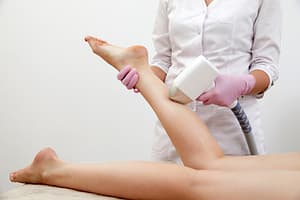Introduction
The shape and position of our ears contribute to facial balance and overall appearance. For individuals who feel self-conscious about their ears due to their size, shape, or how they protrude, otoplasty provides an effective cosmetic solution. Commonly referred to as ear correction surgery, this procedure helps individuals feel more confident by refining the shape and alignment of the ears. In this article, we’ll explore the benefits, procedure, recovery, and important considerations of otoplasty.
What is Otoplasty?
Otoplasty is a surgical procedure that modifies the ears’ structure to improve their appearance or correct deformities. This procedure is commonly performed on children and adults who wish to adjust the position, shape, or size of their ears. It is especially recommended for individuals whose ears have fully developed, typically by the age of five or six.

Who Can Benefit from Otoplasty?
People seek otoplasty for various reasons, such as:
- Protruding ears: The ears stick out more than normal and need repositioning.
- Asymmetrical ears: To create a more even and proportionate look.
- Congenital or acquired ear deformities: Addressing structural abnormalities present from birth or due to injury.
- Desire for improved aesthetics: Enhancing ear appearance to boost self-confidence.
The Otoplasty Procedure
This surgery is usually performed in an outpatient setting, with local or general anesthesia depending on the complexity. The general process includes:
- Making an Incision: A small incision is made behind the ear, typically in the natural fold to minimize visible scarring.
- Cartilage Reshaping: The surgeon carefully adjusts the cartilage by removing or reshaping it to achieve the desired form.
- Securing the New Shape: Stitches are used to hold the ears in their new position.
- Closing the Incision: The incision is carefully sutured, and bandages are applied for protection.
Recovery and Aftercare
After the procedure, mild discomfort, swelling, or bruising may occur but typically subsides within a few days. To ensure proper healing, patients should:
- Wear a protective headband as advised by the surgeon.
- Avoid activities that may put pressure on the ears, such as sleeping on the side.
- Maintaining hygiene in the treated area and adhering to aftercare guidelines are crucial for a smooth recovery.
Most people can resume normal activities within a week, while complete healing may take several weeks.
Possible Risks and Considerations
Although otoplasty is a low-risk procedure, possible complications may involve minor bleeding, infection, or temporary discomfort.
- Unfavorable scarring (though it remains discreet behind the ear).
- Asymmetry or dissatisfaction with the results.
- Temporary changes in skin sensation.
Selecting a skilled and experienced plastic surgeon significantly reduces these risks and ensures a successful outcome.
Conclusion
Otoplasty is an effective and safe procedure for individuals looking to improve the appearance of their ears. Regardless of whether the surgery is done for aesthetic improvement or structural correction, it offers lasting benefits and enhances an individual’s self-esteem. Consulting a qualified surgeon is the first step toward achieving a balanced and natural ear appearance.







